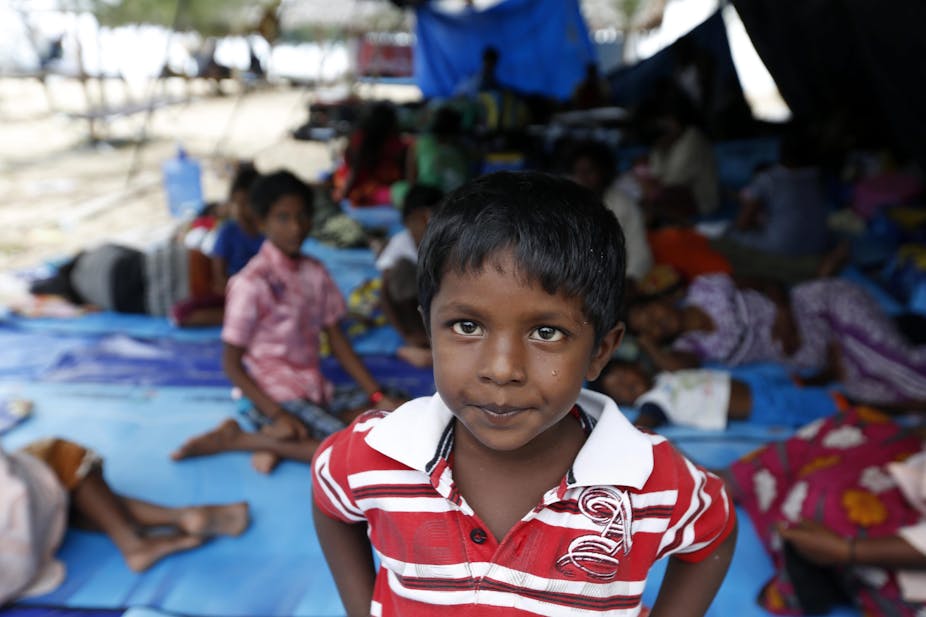Press Release BINCANG ASEAN “Democratization in Southeast Asia: The Case of Indonesia, Philippines and Thailand”
Bincang ASEAN Monday, 14 May 2018
Yogyakarta – Recently, the ASEAN Studies Center UGM held its first Bincang ASEAN in 2018 entitled “The Democratization in Southeast Asia: The Case of Indonesia, Philippines and Thailand” at Digilib Café FISIPOL, UGM. This particular Bincang ASEAN featured Hestutomo Restu Kuncoro, M.A. (Alumni of Manchester University) with Ezka Amalia (Researcher at ASEAN Studies Center UGM) moderating.
On this occasion, Hesutomo raised the topic of democratization in Southeast Asia, using comparative methods of Western democratic model and models adopted in Indonesia, the Philippines, and Thailand. As the discussion progressed interactively, Hestutomo explained that Southeast Asia did not support the strong Western democratization model in Latin America and Eastern Europe because of differences in the type of regime. As a consequence, Huntington’s ‘universal’ model of democratization is not applicable to Southeast Asia as it could not portray a complete explanation of the process taking shape in the region.
Putting the context on Southeast Asia, a region that is relatively immature for its democracy, Hestutomo argued that Thailand and the Philippines subscribe to the opposition-initiated democratization theory, whereas Indonesia adopted the regime-opposition alliance theory. These two types of theory are self-explanatory in nature; both are named after the drive for democratization. The former is characterized with non-violence movements and revolts, to begin with, and started without a power overturn. These people who demanded democracy fought against the same enemy, not because of a shared vision. On the contrary, the latter emphasizes on the function of regime opposition that seeks for change. True oppositions in Indonesia, in this regards, is difficult to define.
To further argue, Hestutomo contended that the power of people or civil society is not evidently strong to drive the democratization in Southeast Asia. In Britain, the free flow of ideas during the democratization process was associated with the existence of a strong civil society, something that Southeast Asia did not share in common. The interdependency between business sectors and politics are deemed as the catalyst for democratization. For instance, the unintended consequence of elitist competition in Indonesia gave birth to a greater democracy after the New Order era. In the Philippines, the constituents and those who are loyal to Aquino could not give much to say in the political agenda unless Aquino gave an approval in their action. People in Thailand, however, sought to get the patronage of the country.
As to the goals of democratization in Southeast Asia happened primarily due to the expected outcomes of the people within the jurisdiction of the respective state, such as to provide a better opportunity to be heard and to provide a better security from the state. Such conditions depict Indonesia during the fall of well-known corrupt Soeharto’s regime that curbed the voice of the people. In comparison to Portugal and Spain whose, people strove to seek democracy to participate in deciding the budget allocation of the country, the case in Latin America showed a transitional situation from a very closed government into one with the inclusion of the people in economy and decision-making process.
The role of the military in government, as Hestutomo explained, dominates in the Philippines and Indonesia. As time passes, they begin to enter the political business network to gain access to national resources. A question remains, why is this clear, the power of the people in the Philippines still unable to remove the authoritarian government that unilaterally supports Marshall’s Law and the War on Drugs in the country despite their views against such practices. Borrowing the physical molecular theory that explains a state of condition with sufficient critical mass and people power and a collective action necessary to transform a particular state or condition to another, democracy is possible to make. However, in fact, is still nowhere near to happen partly because the people in the Philippines still cast their votes to the characteristics of the figure they can relate to.
All in all, democratization in Southeast Asia is an unfinished project due to a plethora of variables. The intertwining role of religion and democracy make us questioning the maturity of the democracy in the region. For instance, the democratic practice in Southeast Asia tends to follow a procedural matter of democracy which highly focuses on the national election. The lack of tolerance to differing views in politics has the tendency to be divisive and harmful for the maturity of our democracy. The question that arises is what kind of democracy do young people imagine as the future of Southeast Asia? and how will our civil society be more open to embracing differences? When he concludes, such a scenario will eventually arise when people adhere to the values of democracy and inculcate it in our lives.
(Written by Kevin Iskandar, research intern in ASEAN Studies Center UGM)










